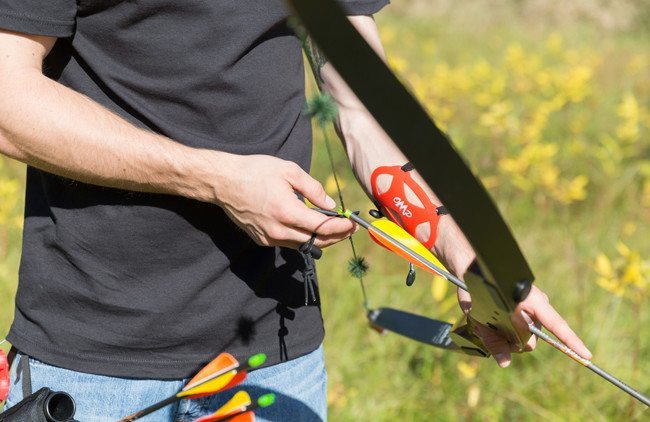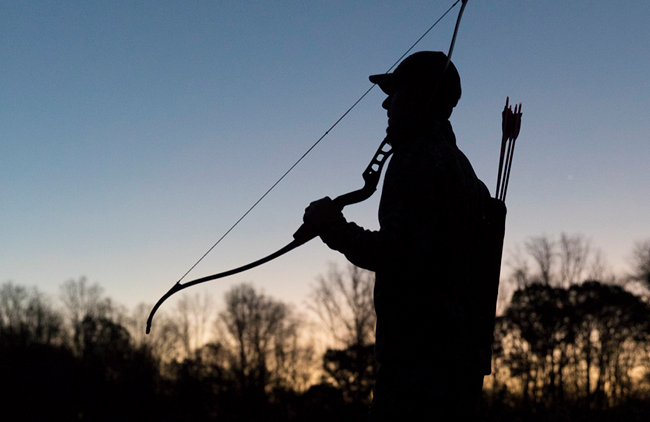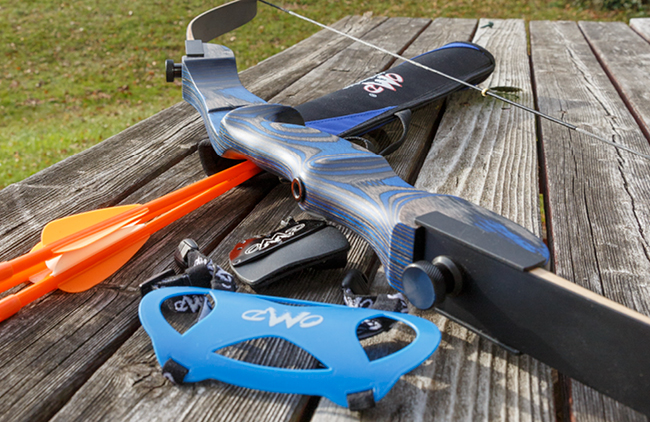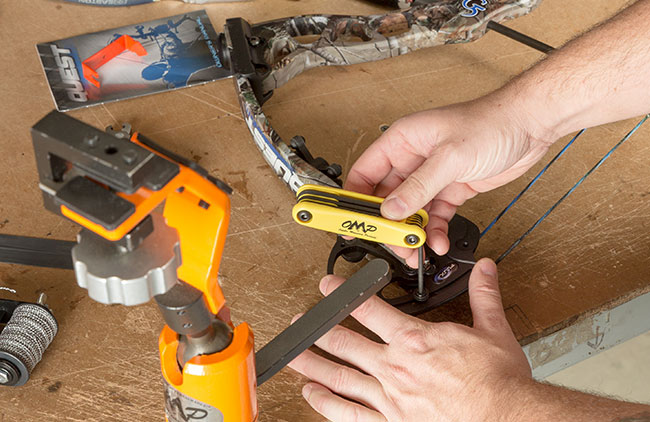Traditonal Archers Path | Maintaining Your Bow Throughout the Hunting Season
How To Maintain A Recurve Or Longbow Throughout The Hunting Season
Hunting with a recurve or longbow requires constant attention to your gear during the season to ensure it is ready to perform at its peak efficiency when the moment of truth presents itself. Actually, it does not demand a lot of work but rather the development of awareness about your gear and how it is handled in the field.
Protect the Bow Tip
One of the basic rules of hunting with a longbow or recurve is to protect the bow tips at all times and resist the natural tendency to use it as a walking stick. The tips of the bow can easily be damaged as well as the string loops and lower section of the bowstring. Allowing the tip of the bow to come into contact with the ground can also damage the bow finish allowing moisture to be absorbed into the tip over time.
The bow tip is under a lot of stress when the bow is strung and offers the smallest cross-section of material. Damage to the tip can easily render the bow useless or unsafe. Cuts or nicks to the string loop or lower part of the bowstring can also lead to string failure at the worst possible moment.
To avoid damage to the bow tips never rest the bow tip on the ground. When stopping to rest or if on watch rest the tip on the toe of your boot. If you need to use both hands for any task hang the bow from a hanger if in a bow stand or lay it on the ground if necessary.
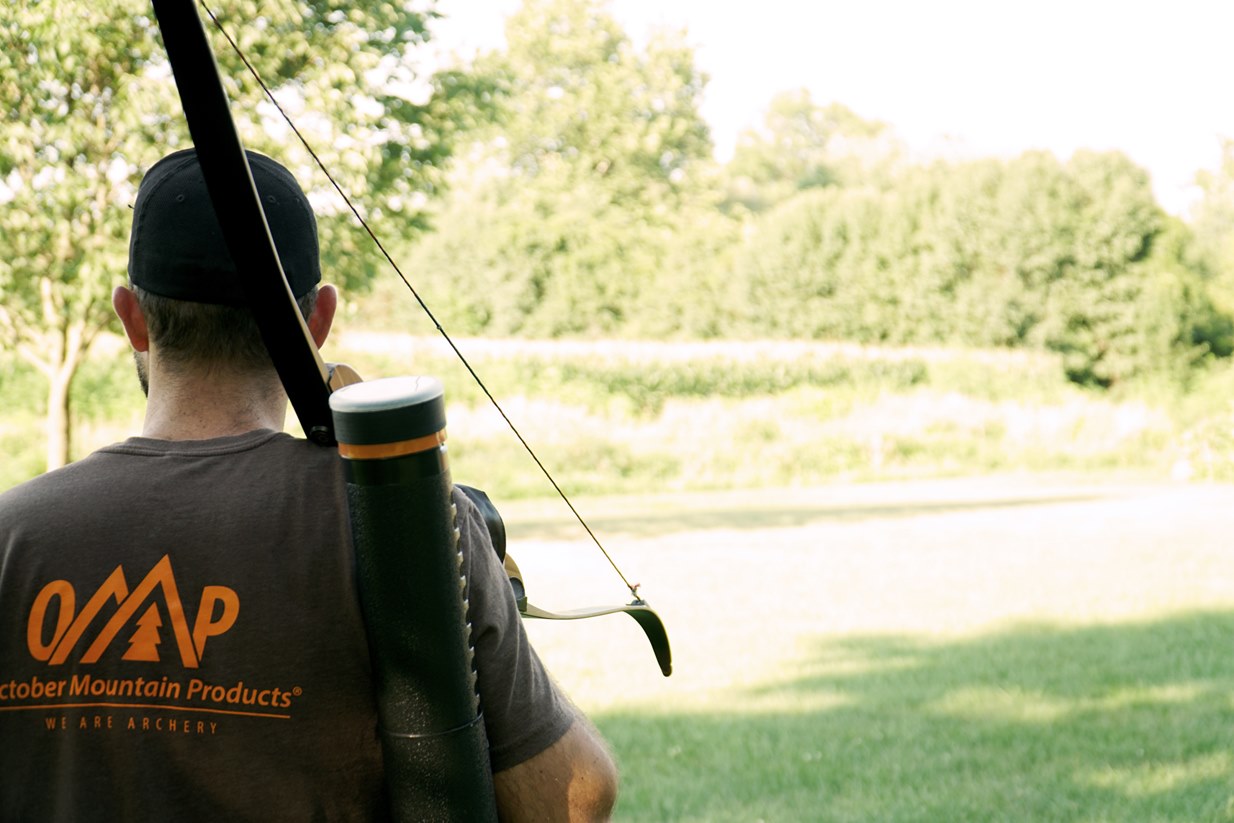
There is a historical photograph that occasionally appears in publications showing Fred Bear crossing a stream while hunting in Alaska using his bow as a walking staff. Unless you own as many bows as Fred Bear had this practice is definitely not recommended. Avoid any situation where you put the tip of your bow on the ground directly.
Another lurking danger to the bow tip is the car door or truck tailgate. When placing a bow in your vehicle for transportation be extremely careful that it is in a rack or bow case to avoid the tip being damaged by a closing door or tailgate. While some states require a bow to be cased when transportation, as a general rule it is advisable to always place a bow in a case when not in use to prevent accidental damage. This is especially true when multiple hunters are using the same vehicle.
Bowstring
Bowstrings and broadheads are like gasoline and fire, they don’t play well together. When handling any broadhead arrow around your bow such as inserting or removing arrows from the quiver or placing or removing an arrow from the bowstring be extremely careful. The slightest touch from the sharp edge of a broadhead can nick the string and if that occurs string replacement and retuning of the bow will be required. Do not assume a slight nick is of no concern. Bowstrings are an endless loop of one strand of material so any cut to the string that appears to have severed only one strand actually severed the bowstring. It may appear to be all right to the untrained eye but the strands are simply being held in place by the servings. The string will continue to slip slowly and fail eventually.
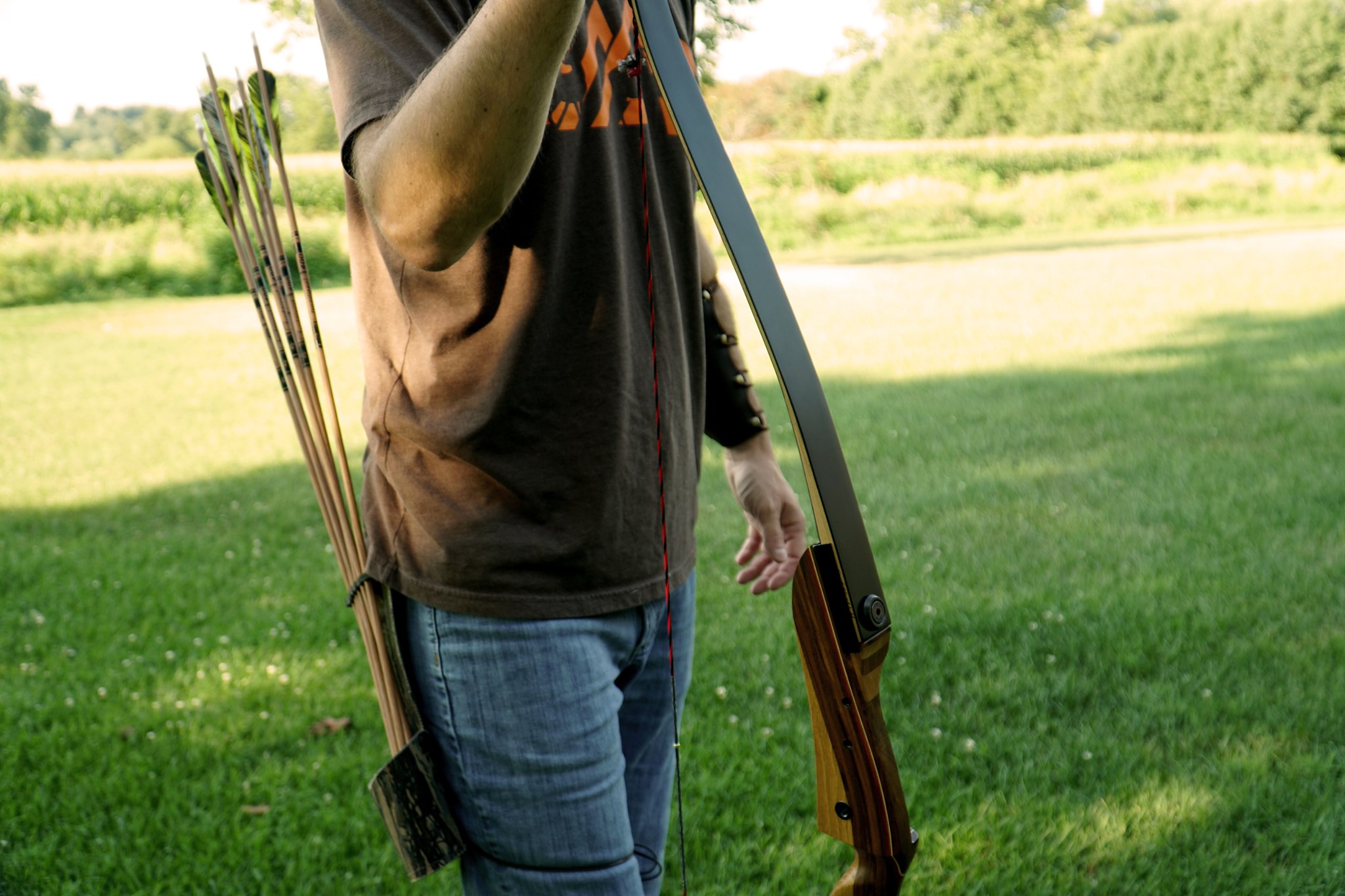
Another danger to the bowstring is simple abrasion from limbs, leaves, tree bark, thorns, etc. Take care when moving to and from your hunting site and when stalking to minimize the bowstrings contact with any of these items. There is also is a tendency for leaves and branches to get caught between the bowstrings and the bow limb at the tip where the two join. When this occurs take a minute to untangle the material from the bowstring and avoid jerking it loose which could make the condition worse.
Keeping a good coat of string wax on the bowstring helps protect the bowstring from moisture and attracting fine particles of abrasive dirt which can cause wear as well as providing protection against normal wear and tear.
Raising the Bow
When hunting from a tree stand or elevated platform it is always advisable to raise or lower the bow using a rope or strap as opposed to trying to climb the ladder or steps while carrying the bow. This is not just safer for the hunter but it also helps protect the bow from damage. Falling with a bow could not only increase the chances of injury to the hunter but could seriously damage the bow as well. When raising or lowering a bow it is best to tie it to the rope or strap so the bow is not on the ground before you start up the tree or when coming down. Shorten the strap or rope so the bow is at least one foot off the ground. This practice keeps the bow off the ground before raising it once in the stand keeping it off the moist ground and preventing ground debris or weeds getting tangled in the bowstring. This also makes it possible to lower the bow to the ground in the dark, ensuring the bow does not strike the ground and damage the tip.
Fighting Moisture
Most bows have a finish that helps protect the bow and guard against moisture. However, a good coat of dull wax can help add an extra layer of protection. Going to and from your hunting site in early morning and evening as well as possibly getting caught in a rain shower could leave your bow soaking wet. If you are hunting and your bow gets soaked simply squeezing the limbs between your fingers and running them the length of the bow will remove a lot of excess water. It is a good idea to always wipe down your bow with a soft cloth after a day’s hunt to ensure any excess moisture is removed preventing it from entering the bow through any small cracks in the finish which might go unnoticed.
Check Sights, Quiver and Rest
It is not uncommon for sights, arrow rests or quivers to become loose during the season. Often the problem is the related vibration caused during transportation. This can happen during normal going to and coming from your selected hunting sites but if the equipment is left in the vehicle during routine trips to the grocery store or for errands around town. It pays to periodically check the tightness of all accessories as well as the limb bolts to ensure proper tightness. It is uncommon to find a problem but it is better to find it by checking then to find your sight or arrow rest is lose when a shot opportunity presents itself.
Also, it is not recommended to leave a bow in a hot car or truck for extended periods of time. It is best to remove the bow from the vehicle if you do not intend to hunt for several days.
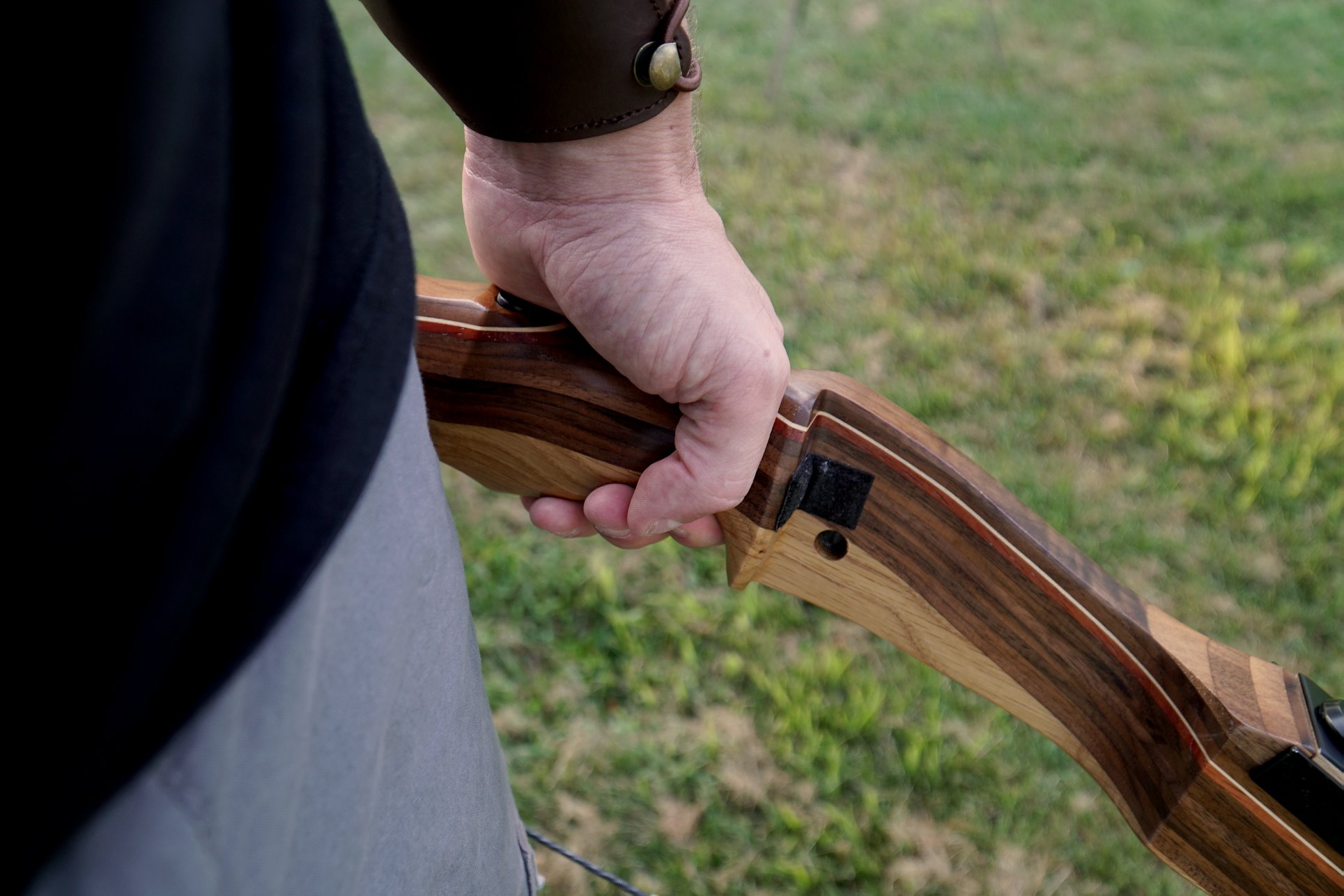
Falls
Falls are not normally planned events when hunting but if you find yourself tripping and taking an unexpected tumble while going to or from your hunting site be sure to closely examine your bow for damage. It is possible for the sight or arrow rest to be damaged or knocked out of alignment but equally possible is damage to the bow itself. Falling on a sharp stone can cause a nick in the limb or worse in the edge of a limb. Check any nick carefully and if in doubt have it checked by your dealer or qualified bowyer. A small nick may just be an unsightly mark but it could also weaken a bow limb depending upon where it is located and its depth. While it might not cause a problem it could result in limb failure if not addressed.
Preventative Maintenance
The best preventative maintenance for your hunting gear is simply some good old common sense. Treat your gear like a fine-tuned instrument because it is. You want to make sure it is in its best shape when a shot presents itself. The best approach is to use the steps outlined above to prevent problems and do regular and periodic inspections of your gear to make sure all is in working order. Taking the time and effort to avoid problems is the best way to ensure your hunting success.


